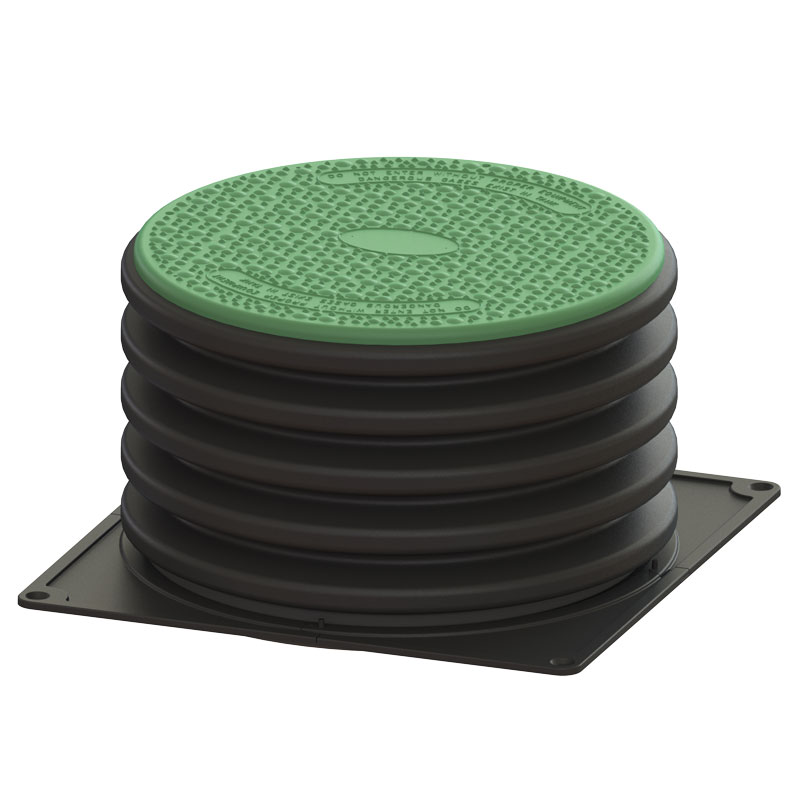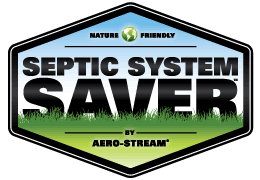Anaerobic Septic System
The problem with Anaerobic Septic Systems without a Controlled Septic Aerator

Anaerobic septic system can cause several problems that most homeowners must deal with each year. The oxygen-free environment inside of the tank allows fermentation of the solid waste to take place. The actual chemical processes that anaerobic bacteria trigger in order to decompose waste generates a number of gasses and materials that can be harmful. Methane, hydrogen sulfide, ammonia and carbon dioxide are all created in the tank and can leave the system through the drainage field making the outdoor field a potentially toxic area. Anaerobic bacteria also exit the septic tank in small amounts and form a thick sludge that settles around the drainage pipes that run through the leach field. This layer of sludge is called the biomat and it can clog drainage pipes over time.
Controlled Septic Aerator = Performance
Many an aerobic septic systems can see an improvement in performance and even a reversal of damage through the use of a Septic System Saver aerator. A large percentage of residential waste treatment systems rely on the traditional oxygen-free environment that is needed to support the growth of anaerobic bacteria that can break down solid waste and some fats over time. These systems are functional but can eventually cause problems when the bacteria become unable to keep up with the volume of solid waste that is in the septic tank. This accumulation of waste can clog the system and create drainage fields that have a strong and unpleasant odor, environmentally harmful substances in the soil and even dangerous runoff.
The Advantage of Having a Controlled Septic Aerator
A septic aerator changes an anaerobic system into an aerobic system by forcibly pumping oxygen into the waste water so that a different type of bacteria will grow and decompose solid waste. Aerobic bacteria that rely on oxygen to survive are capable of digesting waste materials much more quickly than an anaerobic system. Part of this is because the bacteria are more efficient and part of this is because the presence of oxygen in the tank helps to accelerate the process. The faster breakdown of materials means that there is less buildup inside of the tank. This reduces the frequent need for maintenance that anaerobic systems usually require. The presence of oxygen also stops fermentation from occurring so that fewer toxic chemicals are produced. The result is a very clean effluent that can actually benefit a leach field.

Most homeowners don’t want to think about where their sewage goes however these thoughts can be at the top of someone’s mind if they’ve septic system problems. Homeowner not serviced by city sewage services most likely have to deal with septic system problems. Some typical signs septic system problems may not be functioning properly include water draining slowly from sinks, patches of landscaping that are growing better than surrounding due to increased fertilizer, and dead areas of grass due to release of harmful gases from the septic system. Another problem exhibited from an improperly functioning septic system is an intense smell either in the house or in the landscaping.
Understanding the basic septic system construction is pretty simple. Septic systems usually route household wastes from toilets and sinks through piping to an underground holding tank which then connects to the drain field. In most area, the septic system works by gravity but very flat terrain may necessitate the installation of a pump to transfer the wastes. Essentially, solid and liquid wastes travel through piping from the home to the tank where they are separated. The liquids and lighter solids are routed fairly quickly to a drain field. Natural bacteria in the soil aid in the breakdown of the waste products. The more solid material requires an extended holding time inside the tank where anaerobic bacteria can work to break them down in smaller pieces that are able to pass into the drain field.
One common septic system problems is the capacity of these anaerobic bacteria to break down large amounts of waste. New technology is available to remediation current systems by adding a vigorous aerobic process. The additional air allows for the development of aerobic bacteria in addition to the existing anaerobic ones. The incoming sewing is then broken down by both types, dramatically increasing efficiency. Anaerobic bacteria in the septic tank are capable of reduced harmful constituents in wastewater about 35% which leaves the drain field to perform about 65% of the cleansing. The converted aerobic system is able to reduce the constituents by over 90% leaving much less work for the drain field.
Other common problems with septic systems are complaints of the rotten egg smell they emit. Septic tanks that have been converted into aerobic units by controlled aeration have a light earthy odor similar to topsoil. Another serious concern regarding anaerobic septic systems is the effects of hydrogen sulfide gas generated by the anaerobic bacteria when the digest the wastes. The gas is corrosive and wreaks havoc on both concrete and steel. The system can literally fall apart from the corrosive effects. Solving septic system problems with a product from Septic System Saver® can be less expensive than replacing the whole system.
Septic System Saver remediation can solve just about any problem you may experience with septic tanks. Furthermore, the maintenance that Aero-Stream provides does more than just fix what is not working. This company can extend the life of your septic tank by improving its elimination. This will create a cleaner effluent and eradicate the odor sometimes associated with septic tanks. Aero-Stream does all this at a cost which is much more affordable than the usual septic service solution and it does it with no excavation or alteration to your landscaping.
In typical septic tanks that are not treated with Aero-Stream’s unique process, a layer of sludge known as biomat forms along the floor of the tanks and creeps up the walls over time. This biomat seals off the normal escape for a tanks’ discharge. This happens due to the lack of oxygen inside the tank, which does not allow aerobic bacteria to consume materials in the tank as well as they could.
Aero-Stream developed a process which introduces oxygen into septic tanks. This allows aerobic bacteria, which need the oxygen, to thrive. As they increase in number and strength, these bacteria more efficiently consume the materials in septic tanks. Consequently, the biomat shrinks and eventually disappears. This permits septic tanks to discharge through permeable layers into their drain fields. Often, backed-up septic tanks return to functioning condition in a matter of weeks and their discharge is now 90 percent cleaner than before.
The Aero-Stream process does this at a fraction of the cost of a normal septic tank pumping. It does not require that anyone dig up their septic tanks or leach fields. Thus, there is no need to ruin the landscaping that is in place over full septic tanks.

SEPTIC TANK RISER KITS
Bring your septic cover to the surface so it is easy to service the tank. A septic tank riser kit makes installation of Septic System Saver even easier!
